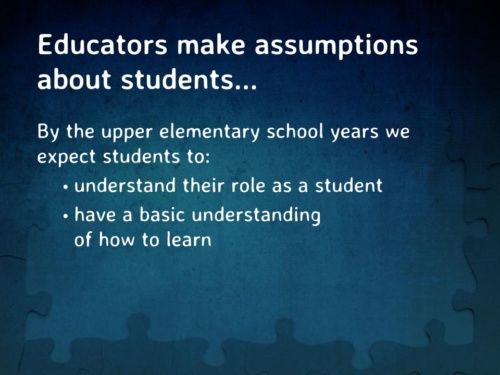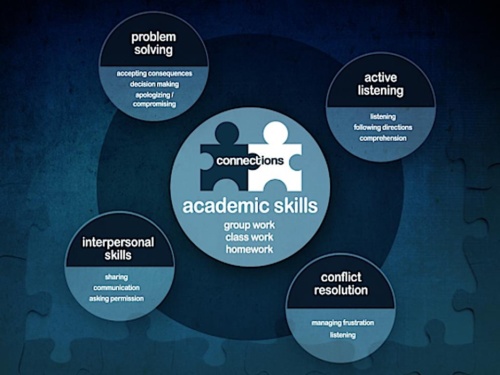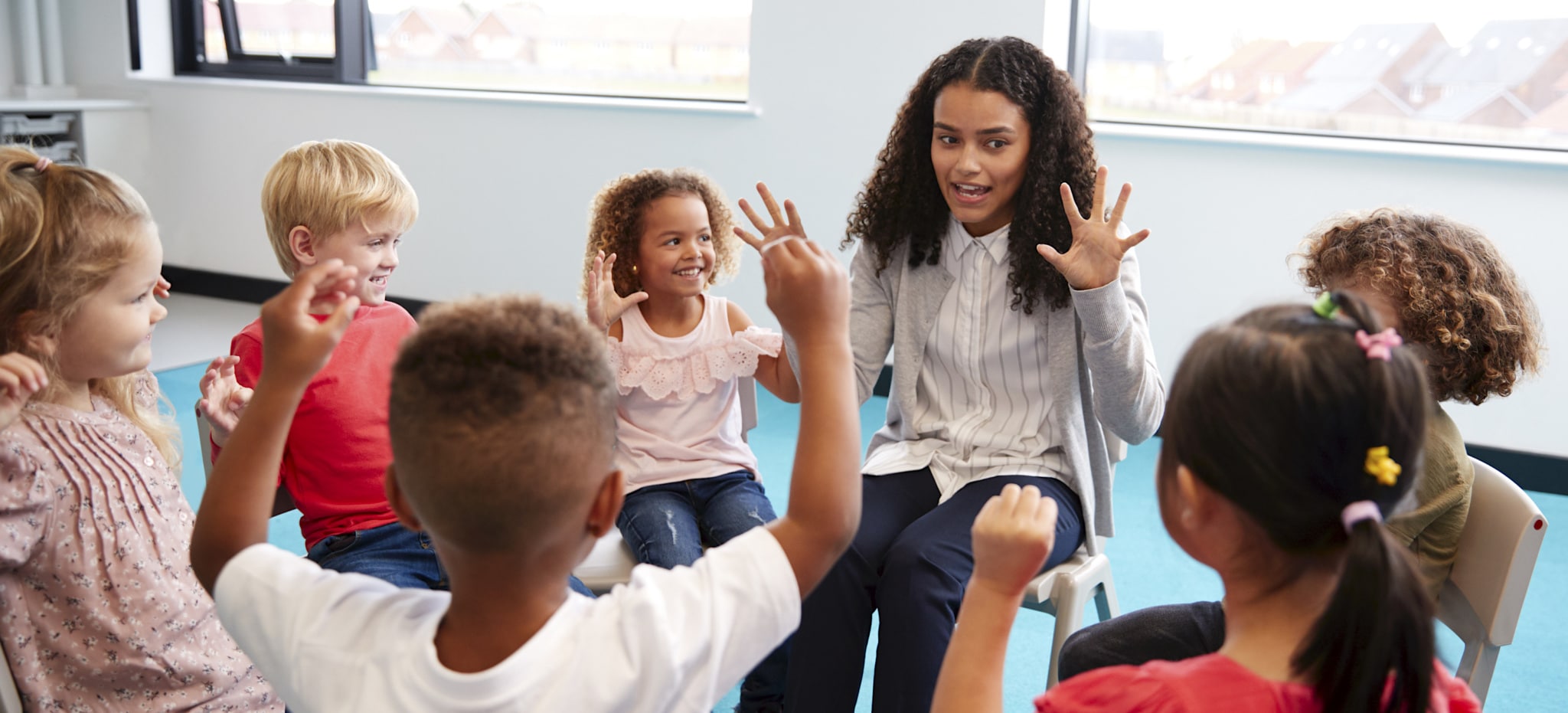In 2009, we trained a group of new teachers on how to work with students for whom learning was a challenge. It’s so clearly memorable to this day because the reaction to a statement Steve made was so surprising.
Steve said, “We’re assuming that kids are coming to our classrooms and know how to learn. What if our assumptions are wrong?”
The slide below was what we shared.

There was silence and then (cue the Hollywood movie music)…the teachers’ faces when the lightbulb went on: “Yeah, wow, you’re right. I hadn’t thought of it this way before.”
During that training a decade ago we went on to talk about what we were calling “functional skills for learning,” which were the skills we believed students needed to have mastered before they could really learn and master academic skills. This is the slide we shared to illustrate the different areas of “functional skills” and their tie into academics.

Fast forward 10 years in education and it’s amazing to see how far we’ve all come in acknowledging the importance of “functional skills” in learning. Social and emotional learning is front and center, and everyone is talking about the need to include SEL in student learning.
What was true then is true now. Students come to us with all different cultural and language backgrounds, experiences, family situations, early learning experiences and more. We really don’t know exactly how the mix of these factors will impact them but what we do know is that they will, and it will be different for all students. No child has the same early experiences. We also know based on the research that these early experiences shape and impact later learning.
So how do we as educators make sure that all of our students have the same opportunities to learn, grow and succeed?
Let’s look back at where we started…with functional skills.
When we give kids a solid foundation we set them up not only for current academic learning but for future learning as well. Teaching kids social and emotional skills for learning (functional skills) means they are able to manage their behavior and attention and interact positively with their peers and adults. But it’s more than that. It’s giving kids the foundation to strive to do better when academics get more challenging and to persevere and sustain their focus during difficult times. People call this “grit,” but we really know it as the application of well-developed “functional skills.”
So what’s the message? Don’t make assumptions, make learners. Teach all kids the skills they need to learn, so that learning is exactly what they’ll do when you are teaching them academics.
Here are three keys to teaching foundational skills:
1. Be specific. If you want your students to be able to identify their emotions, make sure you teach them not only the names of the emotions but what each emotion means.
2. Get them involved. Kids need time to integrate new ideas and content. Make sure they are active participants in their own learning. Let them share examples and stories with the classroom.
3. Have a realistic timeline. Kids don’t all learn at the same pace. Sometimes the “soft” skills are more challenging to learn than math skills, for example. Have patience and make it a critical part of your classroom.
Author
About the Authors:
Lori Jackson and Steve Peck are co-founders of The Connections Model, an SEL and education technology company whose KidConnect Classroom App helps students develop emotional regulation, the necessary foundation for all learning. Learn more by visiting their website or following them on Twitter @TheConnectModel
Lori is an educational psychologist who has been working with students and their families for more than 15 years. She believes that all children have the capacity to succeed in school and the right to a quality education. She has seen the transformation that is possible when students and educators are given the right tools to overcome their social-emotional disabilities and she is passionate about helping more educators experience these breakthroughs.
Steve is a special educator with over 15 years of experience working with students who have multiple and severe disabilities. He believes that new technology is key to helping students overcome their functional skill deficits in the classroom. Steve has always been both a teacher and a techie at heart and has had great success using technology to augment and enhance learning and communication in the classroom. He has created several innovative special education programs in public schools that allow students to remain in district at their neighborhood schools and succeed in those classrooms rather than having to face the disruption of a school change.
Further Reading
- KidConnect Blog – Articles
- NBC News – How play is making a comeback in kindergarten classroom
- eSchool News – Here’s why this principal started a school turnaround with SEL






